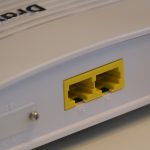Table of Contents
- Introduction to integrating a home security system into your computer
- Assessing your home security needs
- Selecting a home security system
- Installing the home security system
- Connecting the home security system to your computer
- Monitoring system activity
- Conclusion
- Frequently Asked Questions
Introduction to integrating a home security system into your computer
Installing a home security system is one of the best ways to protect your family and property. By utilizing CCTV cameras, motion sensors, alarms, and other features, a well-designed home security system helps prevent break-ins and thefts and can provide vital evidence should a crime occur.
Nowadays, home security systems are becoming increasingly connected with computers that can provide you with additional features and flexibility. You’ll be able to monitor your system remotely, activate or deactivate components, receive notifications if something is amiss and much more.
In this blog post, we’ll discuss the steps for integrating a home security system with your computer, including assessing your home security needs, selecting a home security system, installing the system, connecting the home security system to your computer, and monitoring system activity. With the right system in place, you can ensure that your home and family are safe and secure.
Assessing your home security needs
When it comes to integrating a home security system with your computer, the first step is to assess your home security needs. This means taking a look at your home or property and identifying areas that need protection and the level of protection required.
Consider the value of your possessions and the level of risk you are willing to accept. Think about the number of people and pets that live in your home, and whether or not you will need remote access to your security system when you are away.
Also consider if you want to integrate other smart home devices with your home security system such as doorbell cameras, smart locks, and other devices. Take into account any specific concerns you have, such as potential break-ins, fires, or flooding.
Once you have a clear understanding of your home security needs, you can begin to explore the different options available for protecting your home or property. This will help you to choose a home security system that is tailored to your specific requirements and will allow you to make an informed decision when it comes to installing, connecting, and monitoring your home security system.
Selecting a home security system
Once you understand your home security needs, the next step is to choose an appropriate system. Consider factors such as cost, installation complexity, and technological compatibility.
Your research should also include evaluating the functions of various systems and analyzing which components best suit your needs. Though upfront costs can be high, in many cases they can be recouped through insurance savings.
It is also important to make sure installation is done by qualified professionals who can offer regular maintenance for your system over time. Doing so can ensure your security hardware and software are always up-to-date and working correctly.
With careful consideration and evaluation, you can choose a home security system that meets your budget and offers optimal protection for your home.
Installing the home security system
After choosing the right system for you, the next step is to install it. Depending on the type of system you choose, this may require professional installation or can be done independently if you are comfortable with the process.
If installing yourself, make sure to follow all safety precautions and read any accompanying instruction manuals. Test all components after installation to ensure they are working correctly. Connecting your security system to a computer or other smart device is possible with compatible models.
You may want to hire a professional if you are not comfortable with this process. They can guide you through the setup process and help ensure all components are properly connected, configured correctly, and working correctly.
Having a professional install your home security system also ensures that the system is up to safety and industry standards.
Connecting the home security system to your computer
Once your home security system is installed, the next step is to connect it to your computer. This will allow you to control and monitor the system from anywhere with an internet connection.
Depending on your home security system, this may require additional hardware or software configuration. If this is the case, you may need to refer to the system’s manual or contact customer service for assistance.
With the proper setup, you can access and control your home security system from your laptop or smartphone, as well as set up automated alerts for any unexpected activity detected by your system.
Connecting your home security system to a computer can also allow for easier access when making changes to the settings or monitoring activity. This can help you stay on top of any issues that may arise and give you peace of mind knowing that your home and family are safe and secure.
Monitoring system activity
Once installation is complete, you should regularly monitor system activity to make sure all components are functioning properly. Many home security systems require periodic maintenance to ensure that all components are running smoothly and up to date.
This includes testing alarms, updating sensors, and checking other settings. Regular monitoring of your system should also include spot checks on all entry points in the home, such as windows and doors.
Make sure locks are secure and any motion sensors or cameras are working properly. Keeping an eye on your system will help ensure you and your family stay safe and that any intruders can be detected right away.
Conclusion
In conclusion, integrating a home security system with your computer is a great way to enhance the protection of your home or property. By assessing your home security needs, selecting a home security system, installing the system, connecting the home security system to your computer, and monitoring system activity, you can ensure that your home is secure and that you are always aware of any potential threats.
It’s important to take the time to evaluate your needs and choose the right system for your home so that you can rest easy knowing that your property is protected. By following these steps, you can effectively integrate a home security system with your computer, and enjoy peace of mind knowing that your home is safe and secure.
Frequently Asked Questions
Integrating your home security system into your computer can give you remote access and control of the system, allowing you to monitor activity from anywhere. It also lets you set up automated alerts for any unexpected activity detected by the system.
The process of integrating a home security system into your computer will depend on the type of system you have. Generally, it involves connecting the system to your router and configuring any necessary hardware or software.
When choosing a home security system for your computer, consider your budget, needs, and the level of protection you require. You should also research different types of systems to determine which one is right for you.
Additionally, read customer reviews to get an idea of how reliable the system is and if it meets your expectations.
To use your home security system for your computer, you will first need to install it according to the instructions. Once installed, you can access and control the system from your laptop or smartphone.
You should also regularly monitor system activity and set up automated alerts for any unexpected activity detected by your system.
Some tips for using a home security system for your computer include: making sure to keep all entry points secure, regularly checking sensors and other components of the system, setting up automated alerts for any unexpected activity detected by the system, and testing alarms.
It is also important to keep your software and hardware up-to-date to ensure maximum protection.
Some common problems with home security systems for computers include false alarms, outdated software, and lack of user knowledge. Also, if the system is not properly installed or maintained, it may be vulnerable to intruders.
To address these issues, make sure you understand how the system works and test all components regularly.








